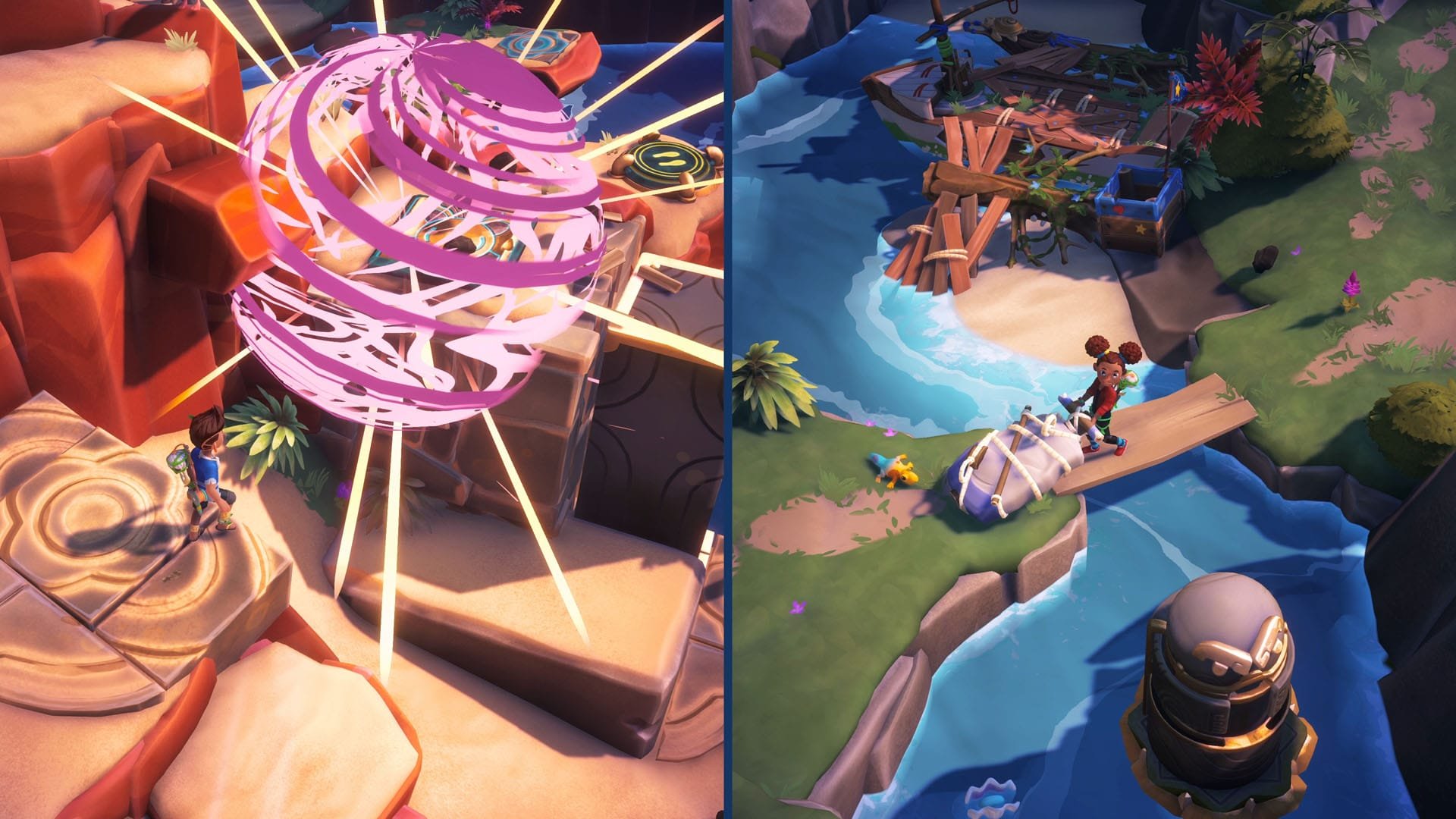Development Information:
Levels: Islands
Genre: Puzzle
Engine: Unity
“Agile Certified”
Key Responsibilities & Process
Survival Kids – Unity Technologies x Konami
As a Level Designer on the upcoming Survival Kids reboot—developed by Unity Technologies in collaboration with Konami for the Nintendo Switch 2—I was part of a cross-disciplinary team bringing a beloved classic into a modern era. Scheduled for release on June 5, 2025, Survival Kids reimagines the 1999 Game Boy Color adventure as a cooperative survival experience with online and local multiplayer.
Project Overview
In Survival Kids, players take on the roles of four adventurous children who stumble upon an ancient map, leading them to a strange and vibrant world composed of islands resting on the backs of massive, mysterious creatures called Whurtles. The gameplay focuses on survival, exploration, resource management, and cooperation. With both local and online co-op support, players work together to craft tools, overcome island-specific challenges, and unravel the deeper story behind the world and its secrets.
My Contributions & Workflow
My responsibilities spanned the full development cycle and evolved as the project matured. Here’s how I approached my work:
🧱 Foundation & Collaboration
At the outset, I helped establish core-level design metrics and workflows, working from early concepts all the way through to final implementation. I collaborated closely with a senior game designer to ensure our foundational structure aligned with the overall vision for pacing, exploration, and cooperative mechanics.
As development progressed, I worked side-by-side with artists, engineers, and QA to continuously refine our process. Midway through the project, another level designer joined the team, and together we focused on bolstering level variety, cohesion, and quality across multiple environments.
⚙️ Implementation & Scripting
Using Unity's internal tools and scripting systems, I was responsible for implementing gameplay mechanics, interactions, and in-world triggers that defined the player's moment-to-moment experience. I carefully designed spaces to support survival gameplay—such as resource zones, crafting stations, and environmental hazards—while always prioritizing player flow and cooperative opportunities.
🔍 Technical Adaptation
I regularly reviewed technical guidelines provided by the engineering team and adjusted levels accordingly. This included optimizing and maintaining performance benchmarks specific to the Nintendo Switch 2.
🐞 QA Integration & Iteration
Throughout development, I worked closely with dedicated internal QA, using Jira to triage bugs and track level-specific issues across multiple test passes. My involvement in this process ensured that levels remained stable and polished across sprints, with consistent attention to detail in both gameplay and player experience.
🎨 Set Dressing & Visual Planning
In addition to gameplay work, I contributed to basic set dressing and environment planning, helping to shape visual composition and guide the art team during their passes. This early visual context helped maintain a consistent tone across the game’s distinct island biomes.
📆 Agile Development
Our team followed a two-week sprint agile framework, with daily scrums in the morning and evening. This structure kept communication clear and progress transparent, allowing us to remain agile and reactive across milestones.






